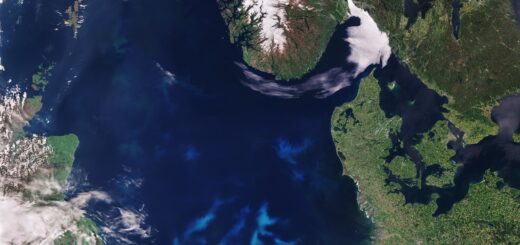Research Brief: Impacts of the Salinization of Small Urban Ponds
2Stormwater retention ponds and other small, shallow water resources are often forgotten in limnological research. For many years, scientists believed that shallower water did not stratify on a density gradient to a meaningful degree. However, due to the influx of runoff, road salt, and other pollutants, stormwater retention ponds and other shallow waters located near urban centers are disrupted and impaired.
In particular, understanding small urban ponds is important to protecting various ecosystem services and urban biodiversity. Salinization, reduced water clarity, warming and eutrophication all impact the density gradient of water bodies.
A 2023 study published in Limnology and Oceanography Letters focuses on understanding what impacts density stratification in shallow water ponds. While the study observed multiple physical parameters, the researchers hypothesized that salinity would play an integral role in stratification and the effects (amplifying or dampening) of other factors.
Methods
An extensive survey was conducted to characterize mixing regimes in urban ponds. First, the researchers sought to compare vertical profiles across a “broad set of ponds to investigate variations in summertime water density gradients and the extent of stratification leading to subsurface anoxia.”1
Depth profiles were collected from 50 stormwater retention ponds in Ontario during the summer of 2022 to investigate their vertical stratification. One of the ponds was excluded due to unusual chemical and thermal profiles, leaving the reported sample size at 49. All of the sampled ponds were located in the Brampton, Ontario area.
Second, findings were applied to an existing framework of mixing regimes2 to extend the predictive framework. The goal was to identify mixing thresholds for salinity, as salinity levels are often indicative of and contribute to other water quality issues.
Lastly, the study tested the relationships between morphometric and anthropogenic factors and vertical density gradients. In this study, anthropogenic stressors refer to maximum specific conductance, surface temperatures, and water clarity. Morphometric factors include maximum depth and surface area.
The relationship between the two factors was studied in order to assess the sensitivity of mixing regimes in shallow water to increasing urban pressures.

Pond at UW Center for Urban Horticulture (Credit: Justin Baeder via Flickr CC BY 2.0)
Results
Results indicate that water columns in the ponds were generally stratified, but basin area and depth played relatively minor roles. Instead, salinity was found to play a much more significant role, along with temperature and water clarity, on water density gradients.1
Gradients did not show a clear spatial pattern among the 49 sampled ponds. Vertical profiles varied considerable between ponds but all showed similar trends of increasing salinity and declining dissolved oxygen with depth.
Samples also indicated that many of the ponds were brackish throughout the summer season, suggesting chronic impairment. In urban areas, the salinization of nearby waters is of increasing concern, and this study further underscores the importance of protecting resources from runoff and including salinity in future density calculations.
Sources
- Loewen, J. G., & Jackson, D. A. (2024). Salinization, warming, and loss of water clarity inhibit vertical mixing of small urban ponds. Limnology and Oceanography Letters, 9(2), 155-164. https://doi.org/10.1002/lol2.10367
- Holgerson, M. A., and others. 2022. Classifying mixing regimes in ponds and shallow lakes. Water Resour. Res. 58:e2022WR032522.















[…] sources, urban runoff and the use of road salt must be reconsidered in order to prevent the further salinization of Ontario’s […]
[…] In particular, stormwater management ponds (also known as stormwater retention ponds) are inundated with high concentrations of chloride (Cl−) during snowmelt or precipitation […]